7+ Daily Schedule Examples to Download
We all have our own responsibilities to attend to. There’s always a task that needs to be carried out within a period of time. But it’s a bit challenging to accomplish everything all at once as we have the tendency to forget things so easily. This is why most people set a sample schedule for themselves to follow on a daily basis.
Daily Schedule Template
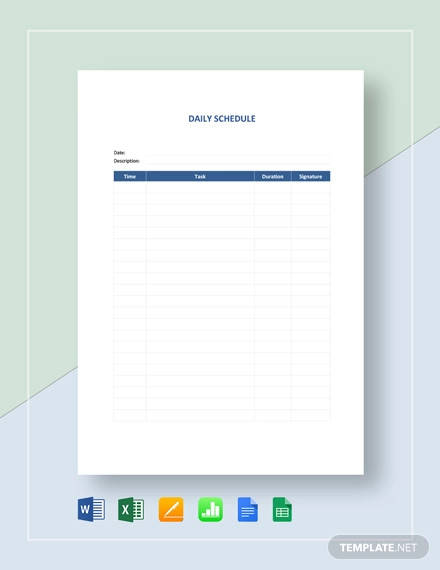
Free Daily Schedule
Schedule for Daily Class
Daily Bell Schedule Example
New Daily Schedule
What Is a Daily Schedule?
A daily schedule is like a daily routine, consisting of defined plans created for a proposed objective. A sequence of activities are also allotted at a given date and time for them to be completed.
It is typically composed of activities, events, and other reminders that one would need to accomplish on a daily basis. It serves as an effective tool to keep yourself organized at all times.
Like a monthly schedule, keeping a daily schedule will allow you to focus on short-term smart goals that you have set for yourself. Having an outline for a day will also keep you from procrastinating. Furthermore, a daily schedule gives you the chance to manage your day accordingly.
How to Make a Daily Schedule
To make a daily schedule, you need to focus on what works best for you.
If you’re making a schedule for a particular person or group, put yourself in their shoes. This way, you’ll have an idea of what would fit into the schedule. Since a schedule is meant to keep yourself organized, then you must structure it to do just that.
It’s important to identify the things that need to be done for a day beforehand so that you’ll have enough time to prepare. You need to properly present your schedule by dividing each task to a particular time and day.
Daily Schedule for Infant
Summer Daily Schedule
Printable Daily Schedule
Importance of a Daily Schedule
To say it bluntly, a daily schedule keeps you sane.
The reality is, having so many things up your sleeve can cause you to forget other things. And when you do remember them, it’s often in the last minute causing you to stress yourself out. It’s hard not to panic when it’s 11:50 p.m. and you have a paper due at midnight.
Having a daily schedule will keep you organized and prepared for the day ahead. Not only will it keep you reminded, but it can also help you develop good habits. A daily schedule will increase one’s productivity and efficiency in properly carrying out tasks. This is why some people like to keep work schedules and college schedules.
Tips for a Daily Schedule
- Make it doable. Be practical with the time period set for a given activity.
- Prioritize. You must be able to prioritize certain activities that need to be accomplished immediately. You can highlight these on your schedule.
- Overestimate the time for a task. Being on a time crunch will cause you to panic and carry out a task ineffectively.
- Update your schedule. When planning ahead of time, there might be changes that need to be made. Make sure this is reflected on your schedule.
7+ Daily Schedule Examples to Download

We all have our own responsibilities to attend to. There’s always a task that needs to be carried out within a period of time. But it’s a bit challenging to accomplish everything all at once as we have the tendency to forget things so easily. This is why most people set a sample schedule for themselves to follow on a daily basis.
Daily Schedule Template

Details
File Format
Google Docs
Google Sheets
MS Excel
MS Word
Numbers
Pages
Size: A4 & US
Free Daily Schedule
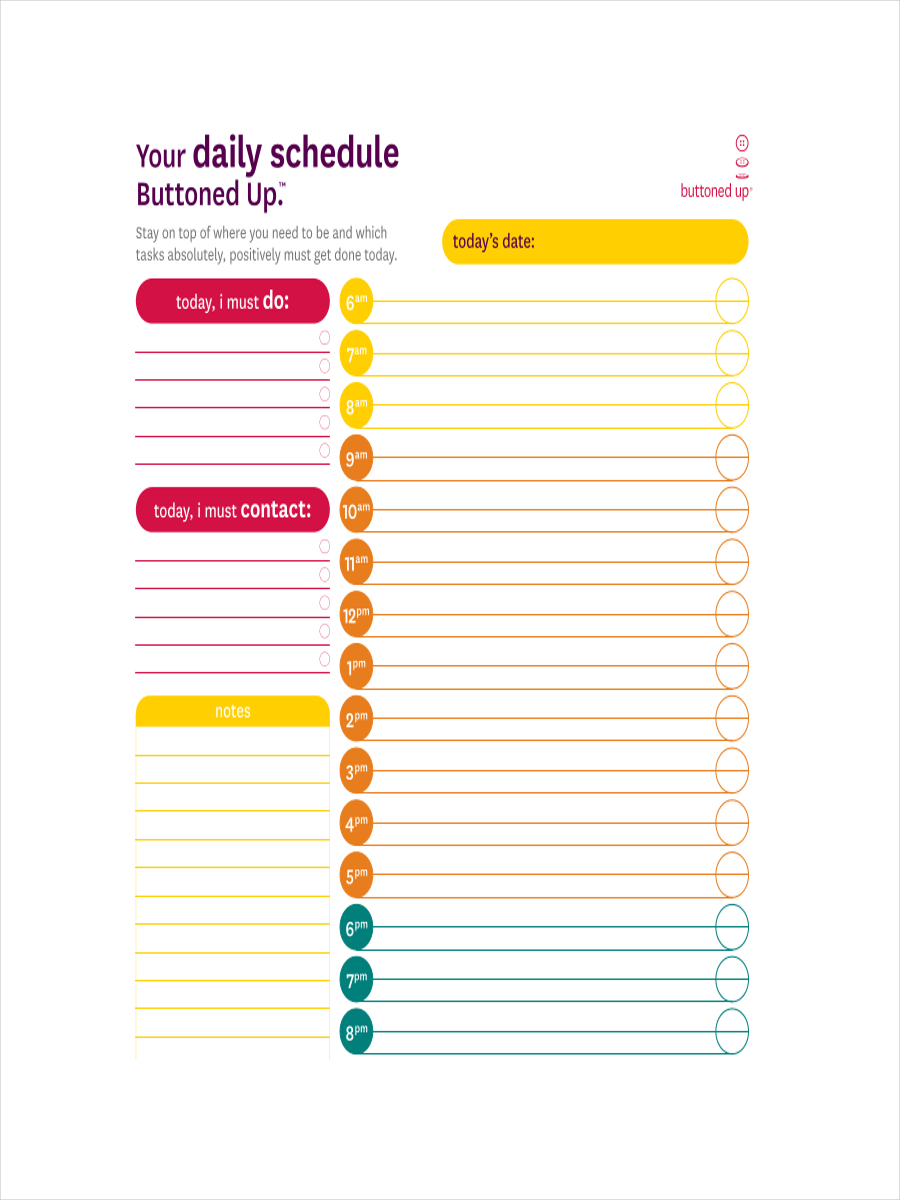
getbuttonedup.com
Details
File Format
PDF
Size: 60 KB
Schedule for Daily Class
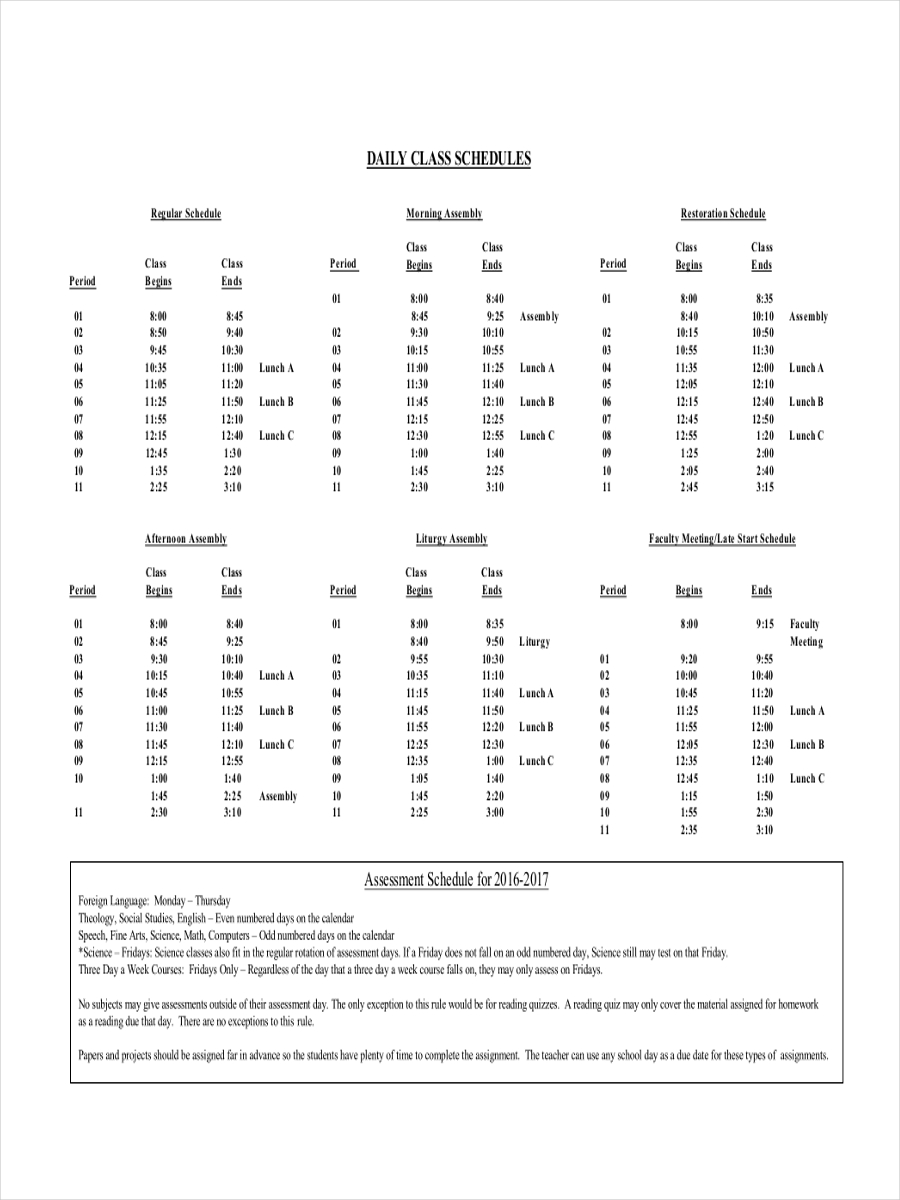
fenwickfriars.com
Details
File Format
PDF
Size: 497 KB
Daily Bell Schedule Example
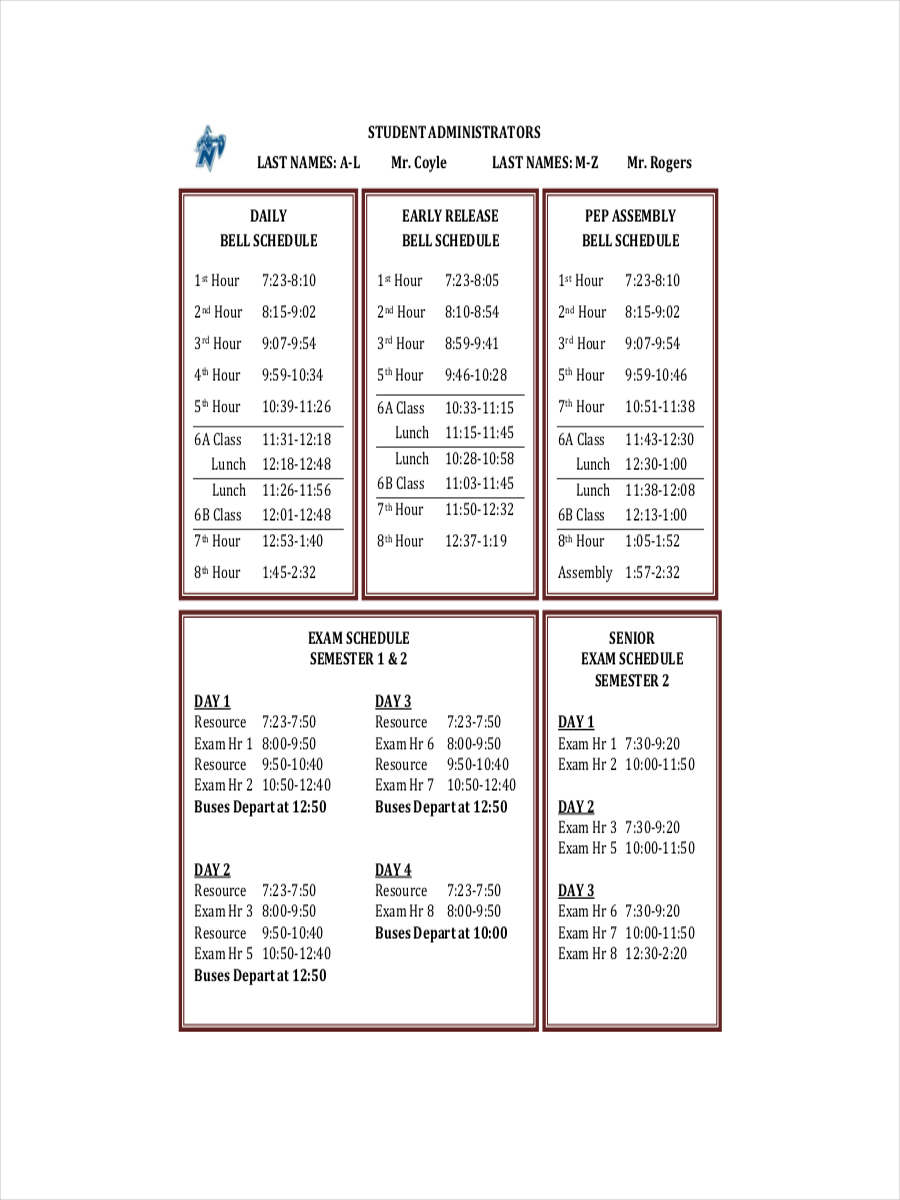
nicolet.us
Details
File Format
PDF
Size: 283 KB
New Daily Schedule
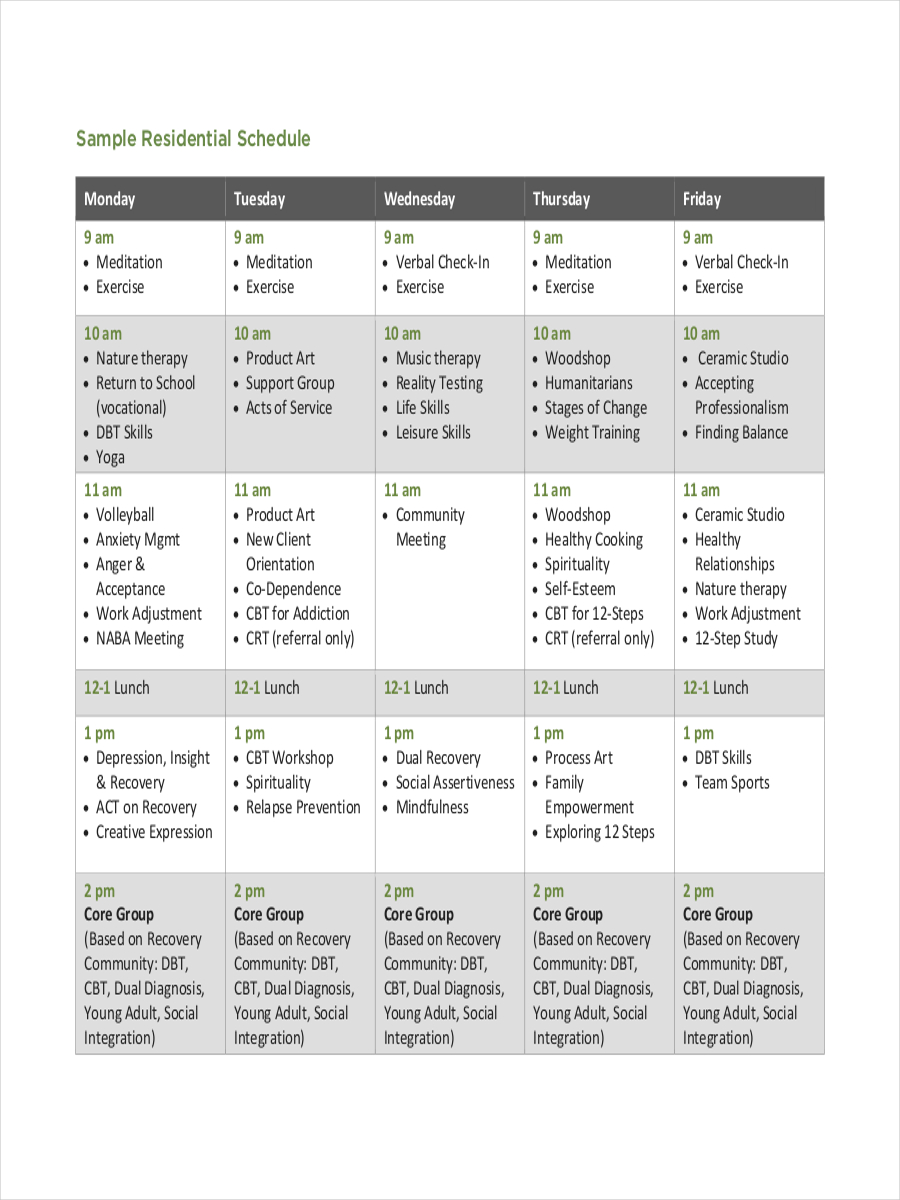
skylandtrail.org
Details
File Format
PDF
Size: 86 KB
What Is a Daily Schedule?
A daily schedule is like a daily routine, consisting of defined plans created for a proposed objective. A sequence of activities are also allotted at a given date and time for them to be completed.
It is typically composed of activities, events, and other reminders that one would need to accomplish on a daily basis. It serves as an effective tool to keep yourself organized at all times.
Like a monthly schedule, keeping a daily schedule will allow you to focus on short-term smart goals that you have set for yourself. Having an outline for a day will also keep you from procrastinating. Furthermore, a daily schedule gives you the chance to manage your day accordingly.
How to Make a Daily Schedule
To make a daily schedule, you need to focus on what works best for you.
If you’re making a schedule for a particular person or group, put yourself in their shoes. This way, you’ll have an idea of what would fit into the schedule. Since a schedule is meant to keep yourself organized, then you must structure it to do just that.
It’s important to identify the things that need to be done for a day beforehand so that you’ll have enough time to prepare. You need to properly present your schedule by dividing each task to a particular time and day.
Daily Schedule for Infant
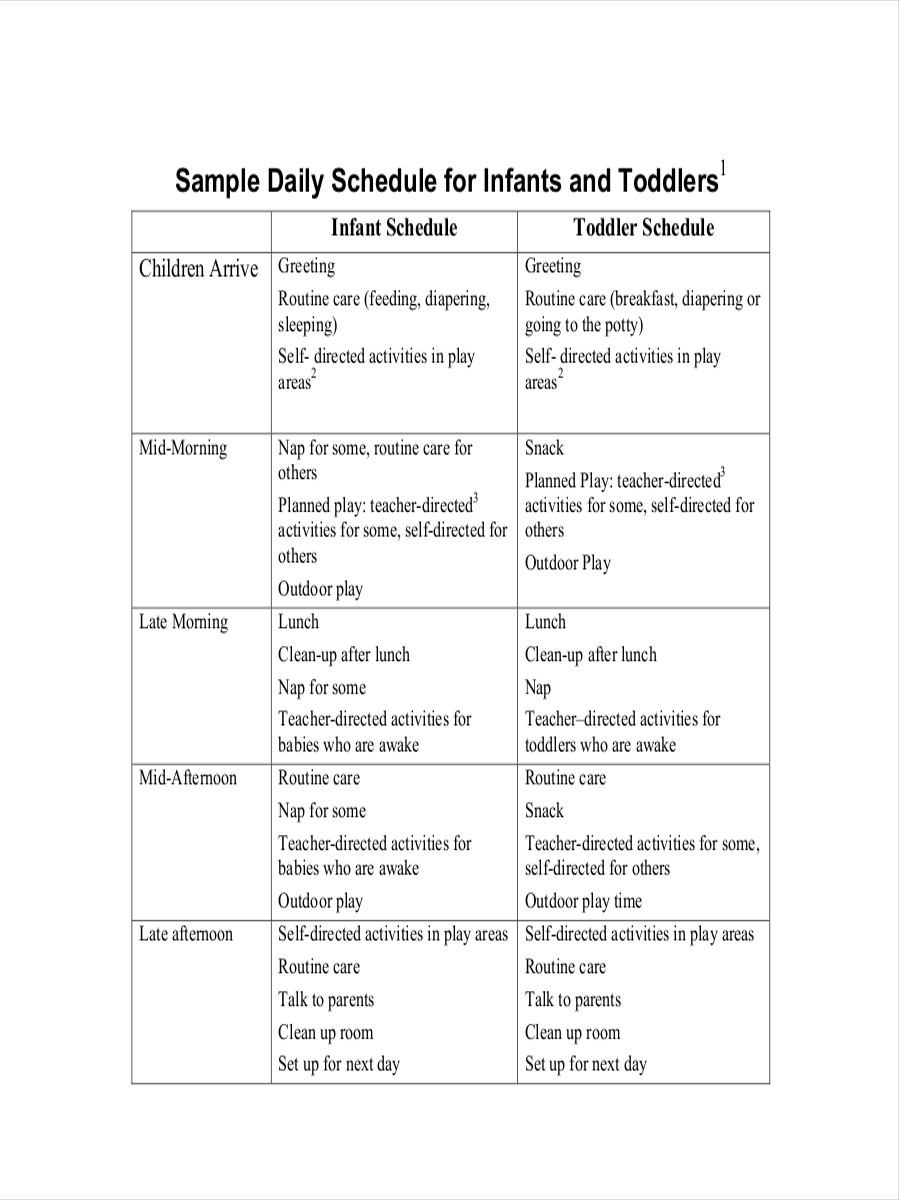
purchaseadd.org
Details
File Format
PDF
Size: 126 KB
Summer Daily Schedule
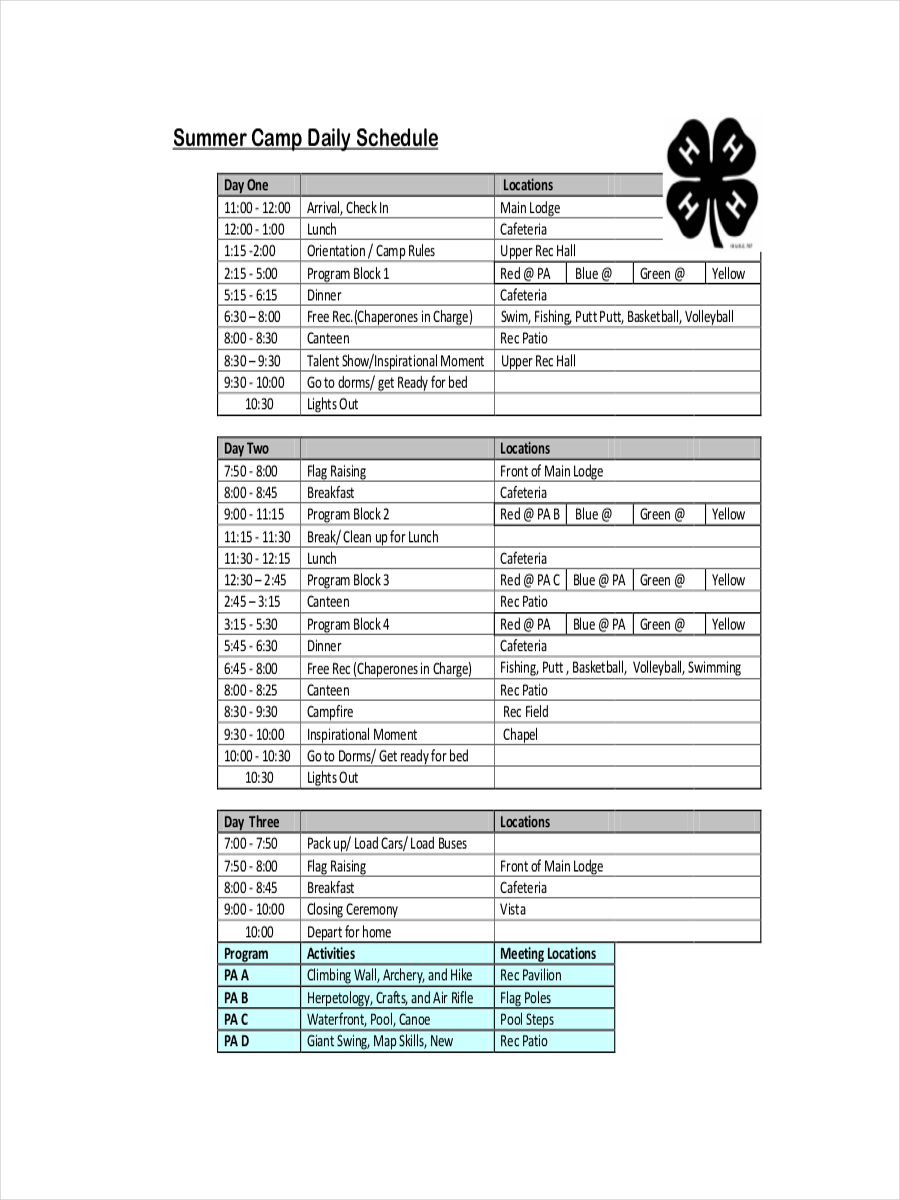
aces.edu
Details
File Format
PDF
Size: 75 KB
Printable Daily Schedule
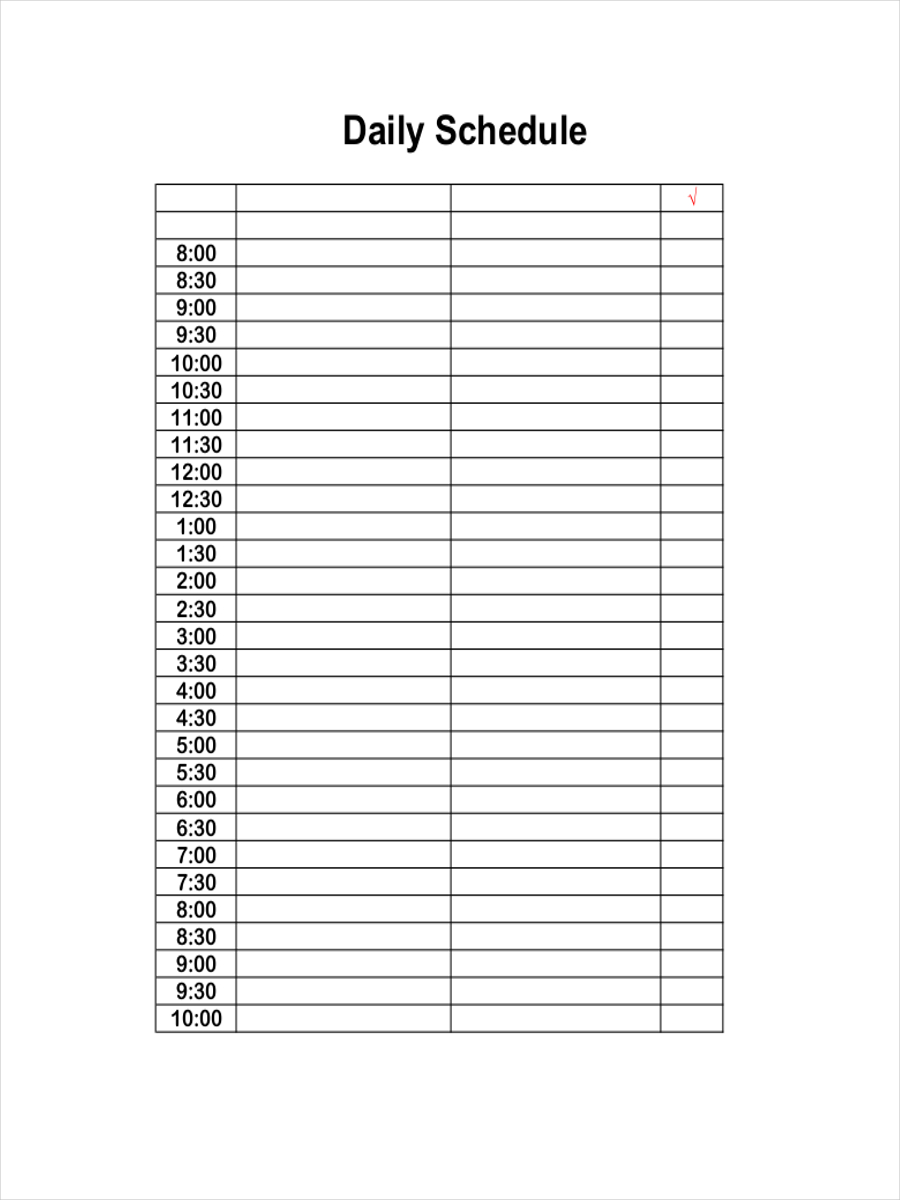
remodelyourmarketing.com
Details
File Format
PDF
Size: 36 KB
Importance of a Daily Schedule
To say it bluntly, a daily schedule keeps you sane.
The reality is, having so many things up your sleeve can cause you to forget other things. And when you do remember them, it’s often in the last minute causing you to stress yourself out. It’s hard not to panic when it’s 11:50 p.m. and you have a paper due at midnight.
Having a daily schedule will keep you organized and prepared for the day ahead. Not only will it keep you reminded, but it can also help you develop good habits. A daily schedule will increase one’s productivity and efficiency in properly carrying out tasks. This is why some people like to keep work schedules and college schedules.
Tips for a Daily Schedule
Make it doable. Be practical with the time period set for a given activity.
Prioritize. You must be able to prioritize certain activities that need to be accomplished immediately. You can highlight these on your schedule.
Overestimate the time for a task. Being on a time crunch will cause you to panic and carry out a task ineffectively.
Update your schedule. When planning ahead of time, there might be changes that need to be made. Make sure this is reflected on your schedule.

